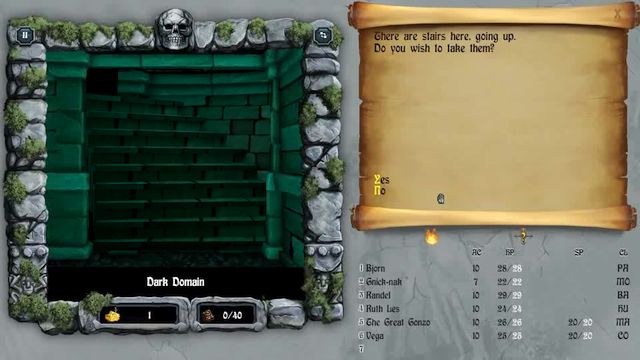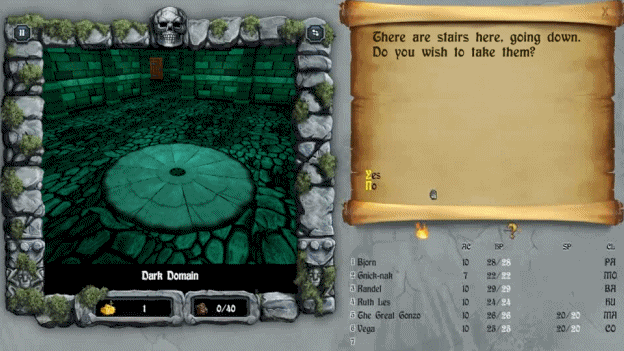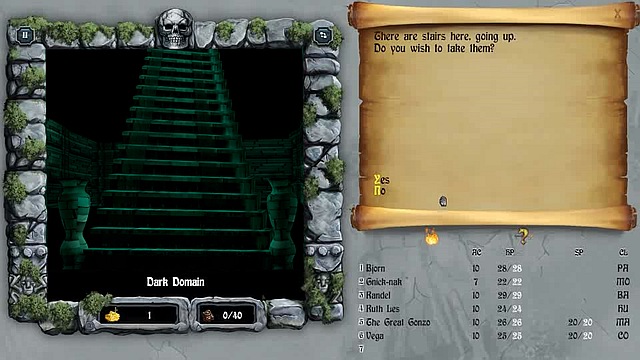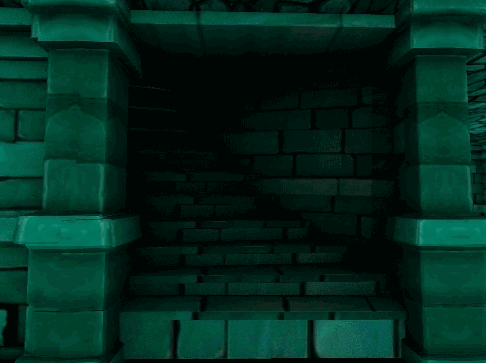You are all wrong (always wanted to write this one day :D). Well, kind of, more like there is a widespread misconception that "thick" equals "one thing per grid cell". It's much more complex in practice. It's a bit difficult to explain (and not very intuitive), the trick to understand "thick" system is to stop thinking about walls and doors (since those are trivial cases) and start thinking about levers (like imagine a single grid cell pillar in the middle of a dungeon with a level on one side, then imagine it has levers on two sides and a button on another and nothing on the fourth side).
Let's start with an example, here is "thick" walls data structure (per grid cell) in Legends of Amberland:
Code:
struct SMapEdge
{
short wall;
short wall2;
char passable; // for monsters only, party requires a better check
short event; short eventparam1,eventparam2;
} edge[4];
int ceil,mid,floor;
short ceil2,mid2,floor2;
char passable; // for monsters only, party requires a better check
short event; short eventparam1,eventparam2;
int creature[3];
char climate;
char region;
And those interesting quotes:
In M&M3-5 there are "thin" edge walls the party can break through. Doors are similarly placed on the edges between cells.
Legend of Grimrock uses the thin-wall approach, but has solid walls as well; primarily on the outer edge of levels.
Notice how some "thick" wall games actually allow/partially use "thin" walls as well?
Theory
There are 3 basic systems:
1) Solid - one thing (like wall or door) is in one grid cell, a trivial system. Roguelikes use it.
2) Edges (AKA "thin" walls) - things are stored on a per edge basis. Gold Box series and Wizardry use it.
3) Solid+Edges (AKA "thick" walls) - the game looks as a simple solid grid based but also has separate edges on each direction of the solid grid cell. Dungeon Master and basically all dungeon crawlers use it.
The misconception is that most people think that games which have "thick" walls use system 1), while those use system 3). They have to, otherwise implementation of levers would be nearly impossible (or at least not feasible).
Therefore, "thick" walls system always INCLUDE "thin" walls system within itself.
Therefore, "thick" walls always use more memory per grid cell (since it has to have everything "thin" walls has + extras), amplified by the bigger spacing of the map itself.
Therefore, "thick" walls system is more complex to code.
That's why, early games used "thin" walls system (lower memory needs, easier to code) and later games advanced to a more sophisticated "thick" walls system.
Why later RPGs switched from "thin" to "thick" walls system
I think for two reasons. One is that the map is MUCH more clear for the player and more aesthetically appealing, it basically looks better. Second reason might be related to map editing which is probably easier for "thick" walls (since you paint Solid elements most of the time and deal with Edge elements rarely). Plus of course it allows crushing enemies by doors in Dungeon Master style. So, overall it's a superior system.
Of course the key reason was probably the memory requirements, later games could simply afford the extra data structure size and the code size to handle it.


























